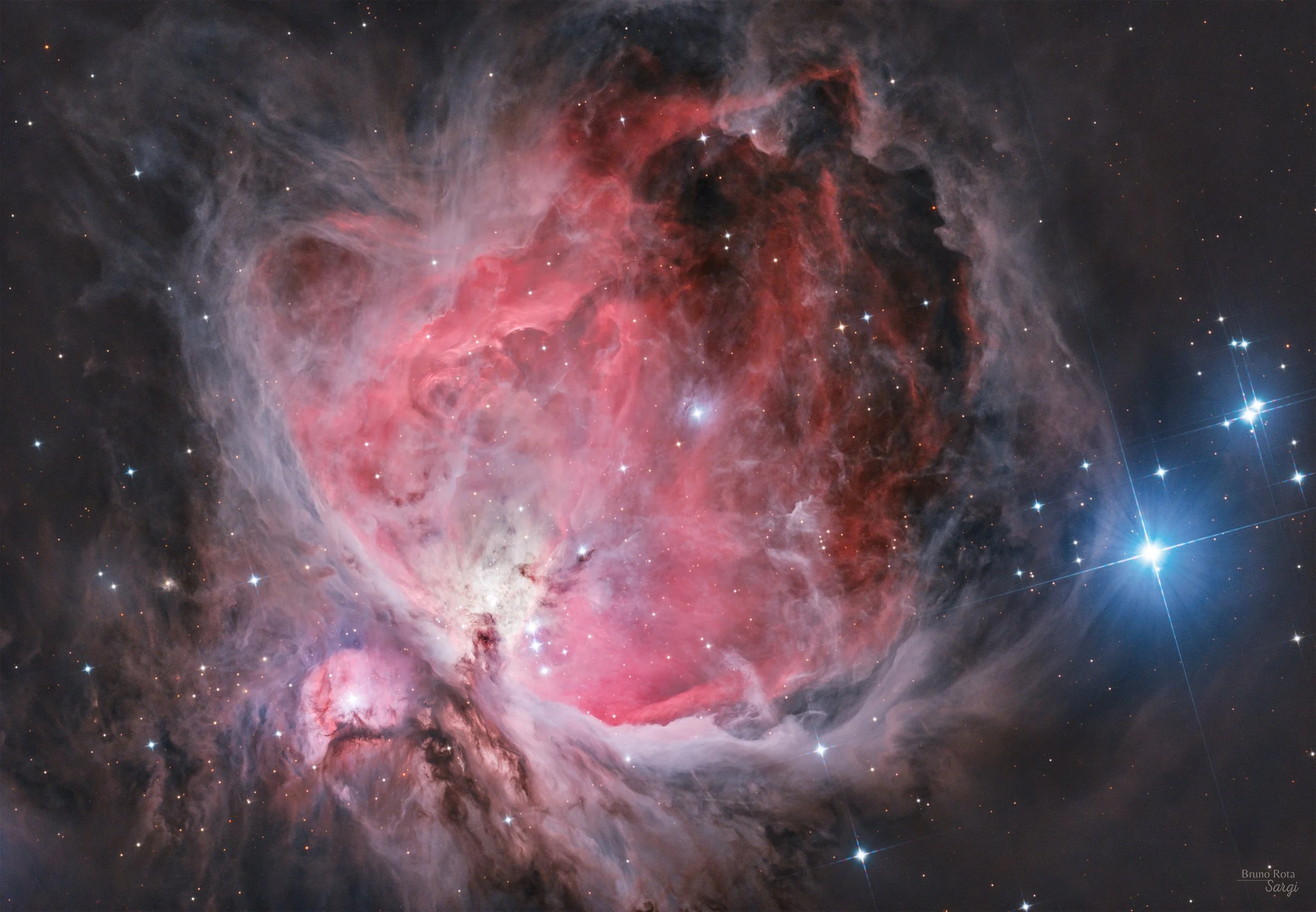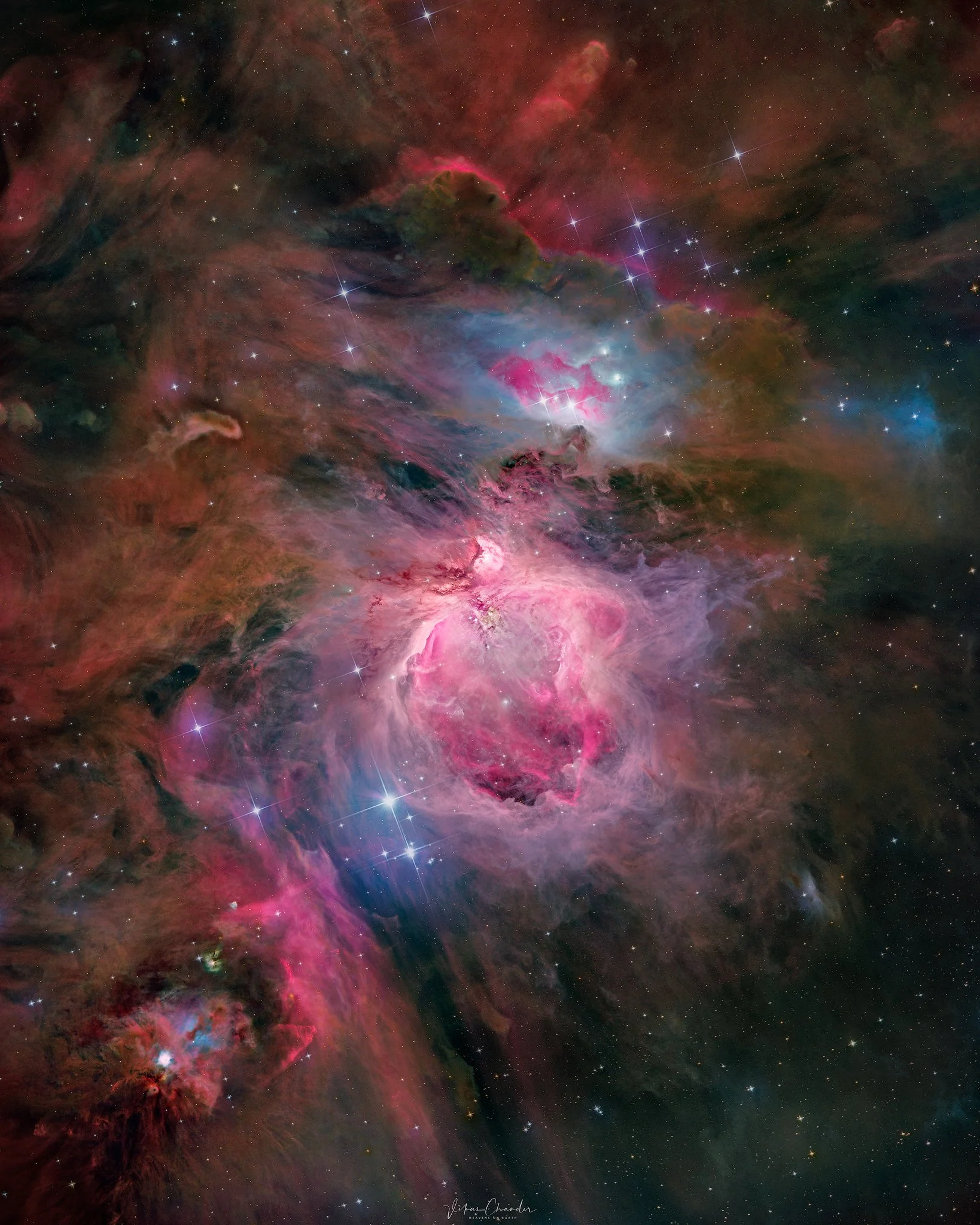
AAPOD2 Image Archives
M42 – The Orion Nebula in HDR-The Cosmic fire of creation
The Orion Nebula (M42) is one of the brightest and most studied star-forming regions in the night sky, located approximately 1,344 light-years away in the Orion constellation. This high-dynamic-range (HDR) image captures the nebula in unprecedented detail, balancing the luminous Trapezium Cluster at its core with the faint, intricate filaments of gas and dust extending outward. Achieved through meticulous exposure blending across multiple filters and sub-exposure lengths, this image preserves both the nebula's brilliant core and its dim outer structures, revealing the full depth of this stellar nursery.
M42 is an active star-forming region where massive young stars sculpt the surrounding hydrogen gas into complex, illuminated structures. The use of narrowband H-alpha and OIII filters isolates the ionized gas emissions, highlighting the nebula’s energetic processes, while broadband RGB and luminance exposures provide natural color and depth. The total integration time of over 26 hours ensures that even the faintest wisps of nebulosity are visible. This HDR composition offers a comprehensive view of one of the most iconic deep-sky objects, showcasing both its dynamic stellar interactions and its rich structural complexity.
The heart of M42
Astronomers estimate the Orion Nebula's mass to be a staggering 2,000 times that of the Sun, attesting to the dynamic forces at play within this celestial crucible. As we peer into its radiant depths, we are granted a glimpse into the majestic theater of stellar genesis, where the cosmos weaves a tapestry of light and matter, perpetuating the cosmic dance of creation and destruction.
In the grand celestial symphony, the Orion Nebula stands as a beacon of brilliance, inviting us to marvel at the wonders of the universe and contemplate our place in the vastness of space.
Orion
The Orion Nebula is a vast and colorful cloud of gas and dust located in the constellation Orion. It is one of the most famous and easily recognizable nebulae in the sky, and is often referred to as the "Great Nebula in Orion" or the "Orion Nebula Cluster".
Difficult to process but done well here, is the Orion Nebula Trapezium, a group of four young hot stars located within the center of the Nebula. The stars, which are known as Theta-1 Orionis A, B, C, and D, are some of the most massive and luminous stars in the Orion Nebula, and are thought to be less than a million years old.
The "Great Orion nebula" and "Running man nebula"
Image Description:
Picture was captured 5 and 6 november 2021 in Chile, Borttle 4 class . Telescope WO ZenithStar 103, Reductor 0.8, Mount Ioptron Cem40, Filter: UVIR Cut Optolong, Asiairpro, Autoguide 240 mm. 160 lights at 180 secs, 180 lights at10 secs, 100 flats, 100 darks, processed in Pixinsight for Mac.
Copyright: Fabrizzio Falconi Romanini
M42 and IC 434 widefield in Narrowband
Image Description and Details :
This image shows the Orion Nebula, De Mairan’s Nebula, the Horsehead Nebula and the Flame Nebula. It was taken with a small refractor telescope from the city. For this, narrowband filters were used and long exposure times helped reveal a lot of gas and dust all around the nebulae. The color was achieved by combining the narrowband channels into a “OHS” combination. This is rarely done and gives this part of the sky a unique look. Other combinations (Hubble Palette or true color) did not really make the objects pop as much. I believe the OHS combination is the best when it comes to imaging this section of the sky in narrowband only, although it is either you love it or you hate it!
Copyright: Antoine and Dalia Grelin







